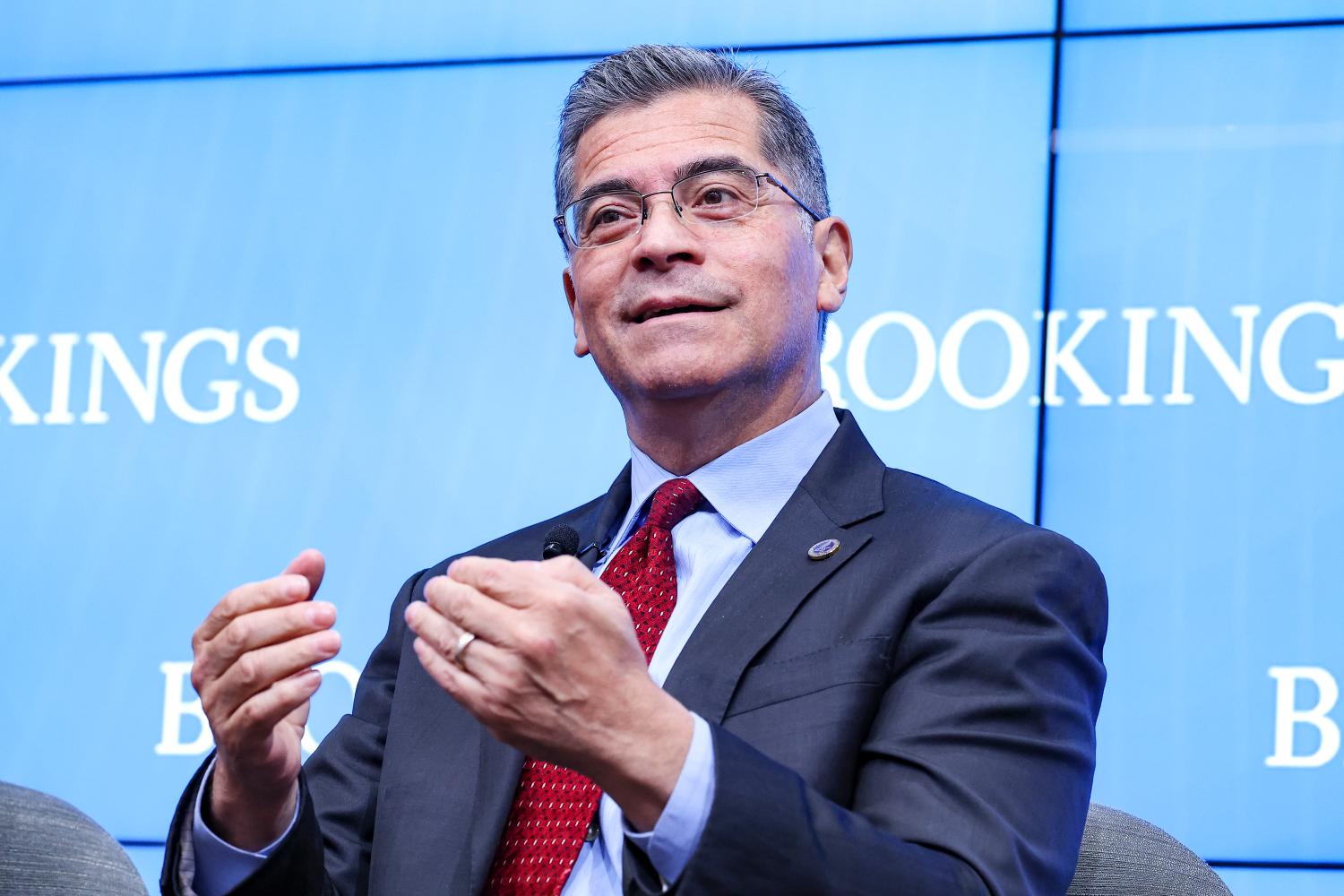


The United States is staring down an unprecedented mental health crisis. Despite increasing rates of mental illness and suicide, barriers to accessible and quality behavioral health care across the country persist. In order to “meet the moment,” the following papers explore federal policy options to improve and strengthen behavioral health care in the U.S.
See summaries of this work below and click the links to learn more.
Editor’s Note: This project is part of the USC-Brookings Schaeffer Initiative for Health Policy, which is a partnership between Economic Studies at Brookings and the University of Southern California Schaeffer Center for Health Policy & Economics. The Initiative aims to inform the national health care debate with rigorous, evidence-based analysis leading to practical recommendations using the collaborative strengths of USC and Brookings. We gratefully acknowledge financial support from The Commonwealth Fund for this work.

Authors: Richard G. Frank, Vikki Wachino, Karina Aguilar
The year 2022 brought increased awareness and concern to the mental health crisis among children and adolescents in the United States. While this year’s urgency is directly linked to the social and physical disruptions created by the COVID-19 pandemic, the evidence we reviewed suggests that the emergence of the current crisis in children’s mental health pre-dates the pandemic by a decade. There is therefore a new sense of urgency to address mental illness in children and youth.
In this paper, the authors clarify the nature and potential sources of the current problem of mental illnesses in children and consider how we might effectively apply the policy tools of the federal government to address this crisis. Their proposals include targeting grant resources to low-income schools, leveraging Medicaid in coordination with grant funding to advance sustainably financed school services, integrating behavioral health into pediatric settings, and strengthening behavioral health screening and treatment under Medicaid’s Early and Periodic Screening Diagnostic and Treatment (EPSDT) program.
Downloads:
Related Content

, Vikki Wachino, Karina Aguilar
December 12, 2022

Authors: Richard G. Frank, Vikki Wachino
Integrating behavioral health into primary care has long been a goal of health policy makers throughout the health system. Primary care settings are touched by most people and offer a setting that can be less stigmatizing and easier to access than mental health settings. They also offer opportunities to address the range of health and mental health conditions that frequently travel together. More recently, attention to leveraging the supply of primary care practices to address apparent shortages of behavioral health providers in various locations and treatment settings has given still greater import to efforts to integrate behavioral health and primary care services.
In this paper, the authors offer strategies to leverage existing programs like Medicare Advantage (MA), the Medicare Shared Savings Program (MSSP), Medicaid’s Early and Periodic Screening Diagnostic and Treatment Program (EPSDT), and Medicaid Managed Care Organizations (MMCOs). The key elements of their proposed strategy focus on enhanced performance metrics, linking performance to financial and market consequences, and greater attention to enforcing existing program requirements to integrate care and make behavioral health care more robust overall.
Downloads:
Related Content

, Vikki Wachino
December 12, 2022

On December 13, the USC-Brookings Schaeffer Initiative on Health Policy hosted HHS Secretary Xavier Becerra for a fireside chat to discuss the administration’s efforts to advance the integration of behavioral health into health care and other services. The event concluded with a panel discussion among behavioral health experts and stakeholders, including HHS Deputy Secretary Andrea Palm. Complementing the convening, Brookings has released two new whitepapers on policies to strengthen mental health delivery.
Related Content
2022
Brookings Institution, Washington DC
10:30 am - 12:00 pm EST

Authors: Sherry Glied, Karina Aguilar
Rates of serious consequences associated with mental illnesses – suicides, overdoses, and emergency department visits for behavioral health emergencies – are high and have been rising in the U.S. Many of these consequences can be ameliorated through mental health treatment, but roughly half of people who meet criteria for a diagnosable mental illness do not receive behavioral health care, and lack of access is particularly a problem for people from racial and ethnic minority groups. This shortfall in access to (effective) services is an important policy target. Addressing supply-side access challenges in the near term requires a better understanding of the problem of low access to mental health services and how it is related to the size, composition, location, and utilization of the mental health workforce.
In this paper, the authors suggest a new set of policy responses that focus on improving the utilization of the existing workforce to address these maldistributions and misallocations, including: Making it easier for people to receive care through telemedicine; Setting up regulatory rules to encourage appropriate utilization and allocation of services; Improving measurement of the adequacy of access to care; and addressing the needs of underserved groups.
Downloads:
Related Content

Sherry Glied, Karina Aguilar
April 26, 2023

Authors: John O’Brien
The demand for crisis response and other acute behavioral health services has been increasing. Age-adjusted suicide rates have increased by roughly a third from 1999-2019, with the largest increases in suicides for American Indian/Alaska Native men and women. In addition, suicide rates were highest for individuals in rural counties and may be associated with limited access to mental health care, made worse by shortages in behavioral health care providers in these areas, and greater social isolation. Lesbian, Gay, Bisexual, Transgender, and Questioning (LGBTQ) youth are over four times more likely to attempt suicide than their peers. An estimated 45% of LGBTQ youth seriously considered suicide in the past year, including more than one-half of transgender and non-binary youth.
While all these data paint a daunting picture of the behavioral health crisis and access to behavioral health services in the United States, Congress has over time taken a series of steps to address the vulnerabilities of individuals and their caregivers who need access to immediate crisis care. The Administration has also taken parallel steps to augment some of these Congressional actions. These efforts have been useful in messaging the importance of and, in some instances, underwriting the cost of crisis services. While some states have taken advantage of these opportunities, there is still a need to not only define the continuum of crisis services but develop effective tools to allow states and their crisis providers to develop, implement, or modernize these services. As discussed in several sections of this brief, there are gaps in critical crisis services that have not received sufficient attention from the Administration that could round out the continuum. In addition, the infrastructure needed to support the crisis continuum and divert reliance on law enforcement to first responders would benefit from additional strategies and investment. The issues and proposed strategies discussed below would provide more substantive and needed changes to ensure better uptake and promote greater access to these crisis services.
Downloads:
Related Content

John O’Brien
May 17, 2023

Authors: Vikki Wachino
Policymakers face several challenges with respect to expanding access to mental health services outside of traditional health care settings. Efforts to expand access outside of traditional health care settings can encompass a range of goals and approaches, from broad approaches that seek to augment services provided in traditional health care settings to efforts to serve as an access point or conduit to treatment. This makes it difficult for policymakers to match specific interventions with specific policy or system goals. In addition, there is limited evidence on the impact of some of these policy interventions on the people who receive them, including whether they connect people to needed services. This makes it difficult for policymakers to assess the likely impact of policy or funding changes. A third challenge is that some interventions have been well-researched, resulting in solid evidence of their impact on people, but these interventions are not yet widely available.
To help address these policy challenges, this paper a) describes some mental health interventions that are provided outside of traditional, office-based health care settings and available evidence of their impact, and b) proposes policies to advance access to these interventions, including in some cases policies to develop a stronger evidence base. These policy options are aimed at federal policymakers; some are also relevant to state and local policymakers.
Downloads:
Related Content

Vikki Wachino
July 21, 2023
Authors: Richard G. Frank, Sherry Glied, John O’Brien, Vikki Wachino
While bipartisan behavioral health reforms make their way through Congress, there are four key policy areas where the administration can take immediate action under existing authority.